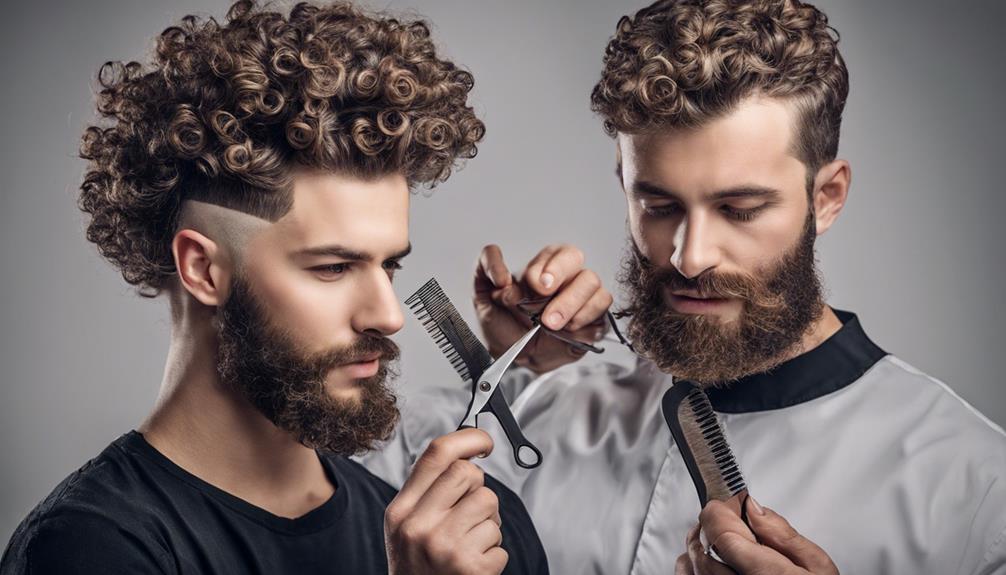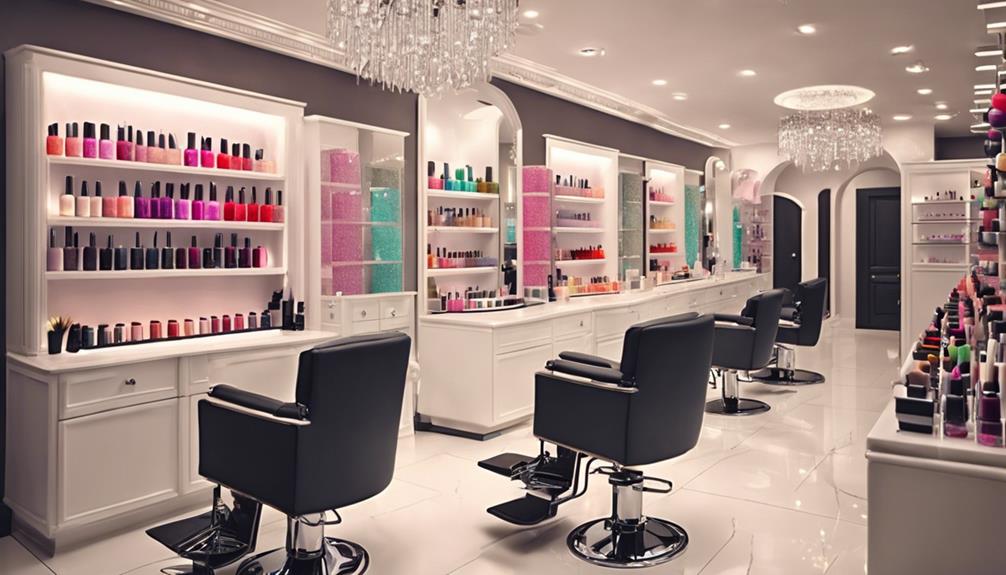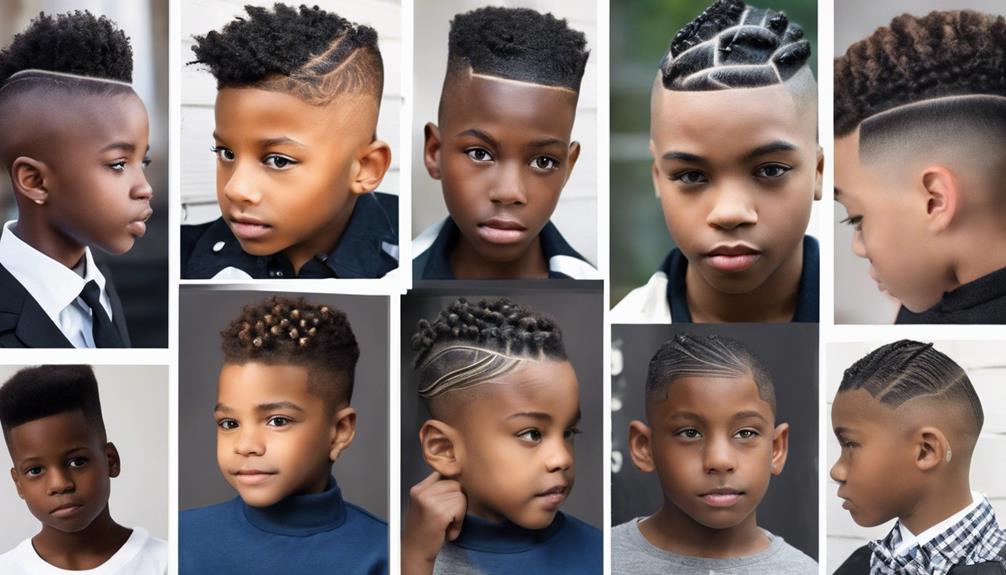In our approach to trimming men’s curly locks, our focus is on adapting to the distinctive traits of curly hair varieties. We pride ourselves on identifying the subtle nuances of curls and utilizing targeted cutting techniques tailored to amplify the natural beauty of each person’s hair. Our detailed procedure encompasses tool preparation, dividing hair into sections, and performing precise cuts, all to achieve an exceptional haircut that fulfills our customers’ desires. This thorough technique lays the foundation for a significant hair makeover, offering additional invaluable insights and expertise in the art of cutting curly hair.
Key Takeaways
- Consult a professional stylist familiar with cutting curly hair types.
- Use sharp scissors for precision cutting.
- Divide hair into sections for even cutting.
- Wet and detangle hair before cutting.
- Consider curl pattern when choosing cutting techniques.
Understanding Curly Hair Types
Understanding the various types of curly hair is essential for achieving a successful haircut that complements the individual's unique texture and pattern. Curly hair types can vary greatly, ranging from loose, wavy curls to tightly coiled spirals. The curl pattern, along with factors such as hair density, porosity, and elasticity, all play a significant role in how curly hair behaves and should be cut.
Wavy curls, for instance, may require different cutting techniques and products compared to tightly coiled curls. By recognizing these distinctions, a hairdresser can tailor the haircut to suit the specific needs of each hair type, ensuring optimal results.
Consulting with a professional stylist who understands the intricacies of curly hair can provide valuable insights into the best approach for cutting and styling different curly hair types. Ultimately, by grasping the nuances of curly hair types, one can unleash the full potential of each individual's unique curls.
Preparing the Tools
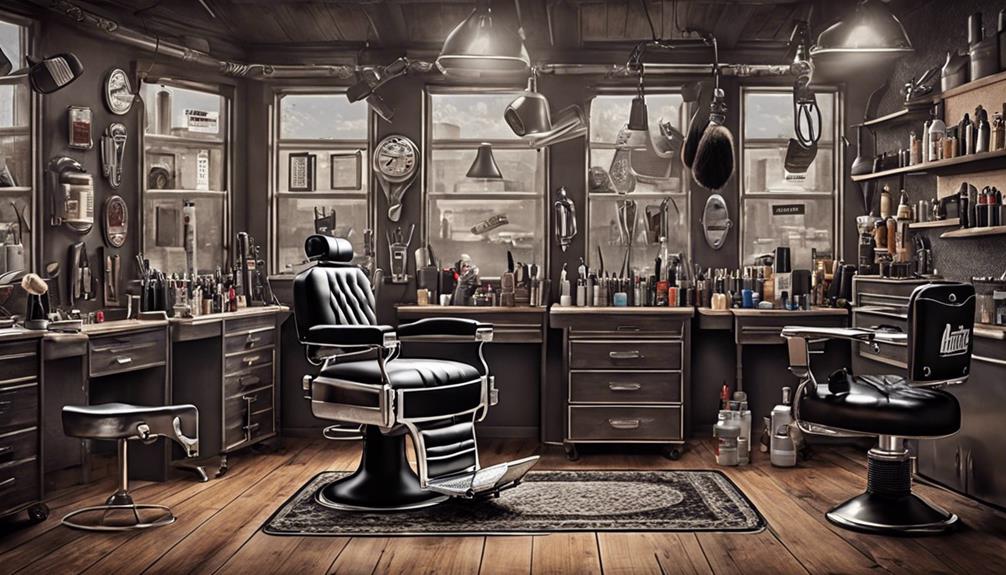
Before starting the haircut, we must collect the necessary tools:
- sharp shears
- a fine-toothed comb
- a misting bottle
- hair clips.
Organizing our workspace efficiently will help us work smoothly and without interruptions.
It's essential to confirm all tools are clean and in good condition to achieve the best results.
Gather Necessary Tools
To prepare for cutting men's curly hair like a pro, gather essential tools such as sharp scissors, a fine-tooth comb, hair clips, and a spray bottle for dampening the hair. Here's what you need:
- Sharp Scissors: Precision cutting requires sharp scissors to maintain the integrity of the curls.
- Fine-Tooth Comb: A fine-tooth comb helps in detangling and sectioning the hair for a more controlled cut.
- Hair Clips: Use hair clips to securely hold sections of hair in place while working on different areas.
Having these tools ready guarantees a smooth and efficient haircutting process, allowing you to achieve professional results with ease.
Organize Workspace Efficiently
Effectively organizing the workspace for cutting men's curly hair like a pro necessitates careful placement of essential tools and ensuring a clutter-free environment. To accomplish this, have all necessary tools within reach, including scissors, comb, clips, and a spray bottle of water. Lay out a clean towel or cape to protect the client's clothing during the haircut. Ensure proper lighting and ventilation for best visibility and comfort. Organize tools systematically in a table as shown below to easily access them during the haircut process. Keeping a clean and clutter-free workspace helps maintain focus and professionalism.
| Tools | Placement |
|---|---|
| Scissors | Within arm's reach |
| Comb | Next to scissors |
| Clips | Easily accessible |
| Spray bottle | On a nearby surface |
Ensure Tools Are Clean
Ensuring the tools are thoroughly clean is vital before starting the cutting process to maintain a hygienic environment and achieve precise results. It's essential to follow proper cleaning procedures to prevent any contamination during the haircutting process. Here are three key steps to make sure your tools are clean and ready for use:
- Remove Dirt and Bacteria Buildup: Clean tools like scissors and combs before each use to eliminate any dirt or bacteria that may have accumulated.
- Sanitize with Disinfectant: Use alcohol or disinfectant spray to sanitize the tools thoroughly, ensuring a hygienic cutting process.
- Remove Hair Residue: Clear any hair residue from the tools to guarantee clean and sharp cuts, helping you achieve precise results consistently.
Sectioning the Hair
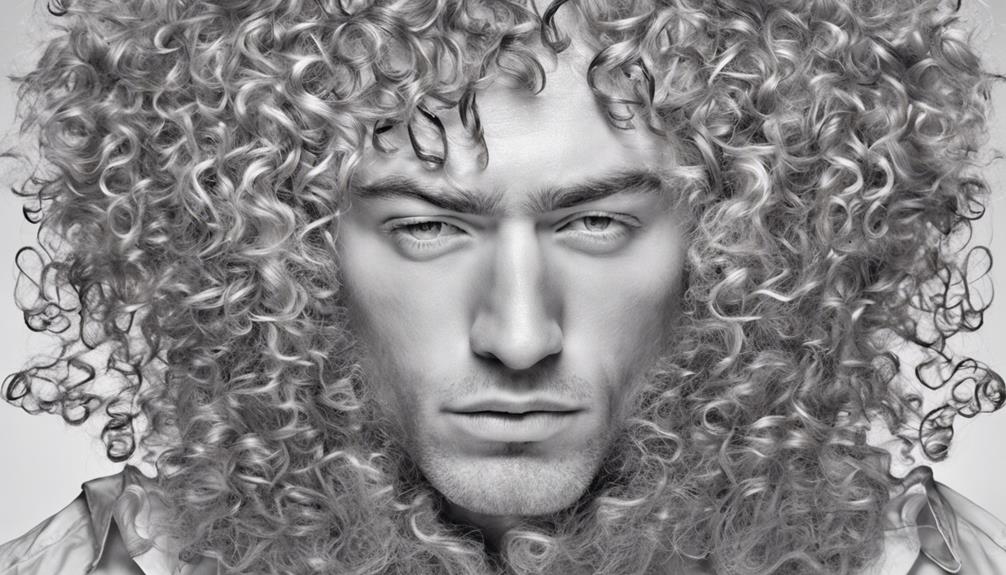
How can we best divide the curly hair into manageable sections for precise cutting and styling?
To achieve a professional finish, start by separating the hair into sections using clips or hair ties. This method guarantees even cutting and allows you to focus on one area at a time, aiding in controlling the length and consistency of the haircut.
Sectioning is vital for achieving precise cuts and styles, especially with curly hair textures that demand extra attention to detail.
Wetting and Detangling

To prepare for cutting curly hair like a pro, thoroughly wetting and gently detangling the hair is essential to soften the curls and guarantee a smoother cutting process. Here are some key steps to follow:
- Fully saturate the Hair: Make sure the hair is fully saturated with water as this helps to soften and loosen the curls, making them more manageable for cutting.
- Gently Detangle with Care: Use a wide-tooth comb or your fingers to gently detangle the curls, working from the ends towards the roots. This method helps to prevent breakage and ensures a smooth detangling process.
- Divide into Sections: Divide the hair into sections to ensure even distribution of water and detangling throughout the hair. Working in sections also helps to manage the detangling process more effectively, especially for thicker curly hair.
Cutting Techniques for Curls

When trimming curly hair to achieve outstanding results, employing specific techniques tailored to the hair's texture and pattern is crucial for a successful outcome.
To create soft, natural-looking layers in curly hair, the point cutting technique is indispensable. Cutting the hair when dry allows for a more precise assessment of the natural curl pattern without the risk of springing.
For shaping individual curls and enhancing definition, consider using the 'twist and cut' method. It's imperative to gradually increase tension while cutting to prevent over-shrinking the curls.
Additionally, when determining the length to maintain the desired curl shape, factor in the hair's bounce to achieve the perfect look. These techniques guarantee that the curls are cut precisely and styled to enhance their natural beauty, resulting in a polished and professional appearance.
Trimming the Ends

After preparing the tools and sectioning the hair, it's crucial to trim the ends of curly hair to maintain its health and appearance. Trimming the ends of curly hair helps eliminate split ends and promotes a healthy look.
Here are three key steps to effectively trim the ends of curly hair:
- Use High-Quality Shears: Opt for sharp, high-grade shears to guarantee clean and precise cuts. This will help achieve a professional finish and prevent fraying or damage to the hair strands.
- Cut When Dry: Trimming curly hair when it's dry allows for better control and accuracy in shaping the hair. This method enables you to see the natural curl pattern and make more informed trimming decisions.
- Divide and Conquer: Divide the hair into small sections and trim small amounts at a time. This approach prevents you from cutting off too much length and helps maintain the desired shape of the curls.
Regularly trimming the ends of curly hair can prevent tangling and breakage, ultimately promoting healthier curls.
Adding Texture and Layers
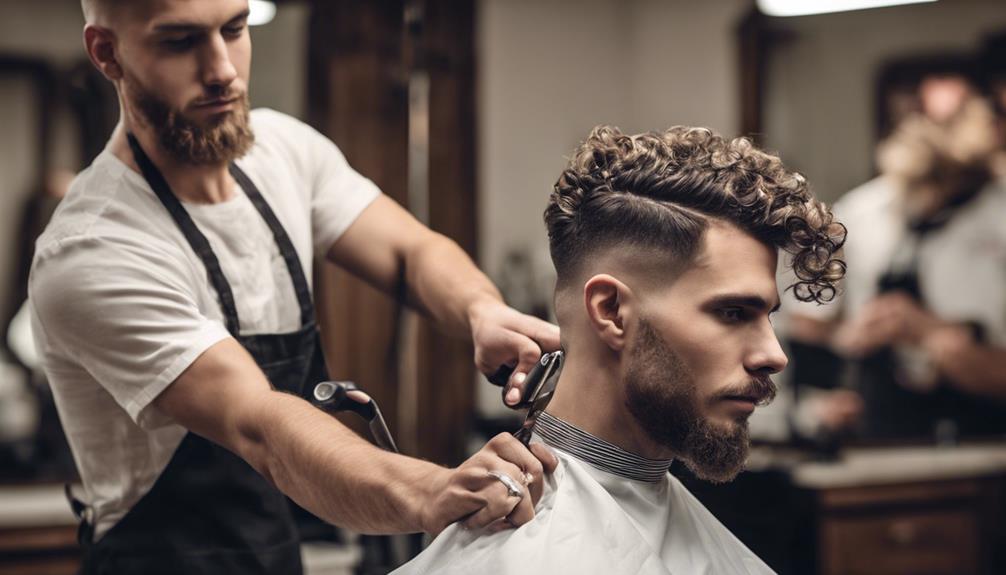
For enhancing the natural volume and movement of curly hair, consider adding texture and layers through skilled techniques. Adding texture to curly hair can amplify its natural volume and create dynamic movement. Layering curly hair is essential to reduce bulk and shape the curls for a more defined appearance. By incorporating texturizing techniques such as point cutting and slicing, depth and dimension can be added to the curls, making them more visually appealing. Gradual layering in curly hair is vital to avoid a triangular or boxy shape, ensuring a flattering look that complements the natural curl pattern. However, it is crucial to note that texturizing and layering curly hair require precision and skill to prevent frizz and unevenness.
| Texturizing Techniques | Benefits | Considerations |
|---|---|---|
| Point Cutting | Adds depth and dimension | Requires precision |
| Slicing | Enhances texture | Skill needed to avoid frizz |
| Gradual Layering | Prevents bulky appearance | Avoids triangular shape |
Styling Tips for Curly Hair
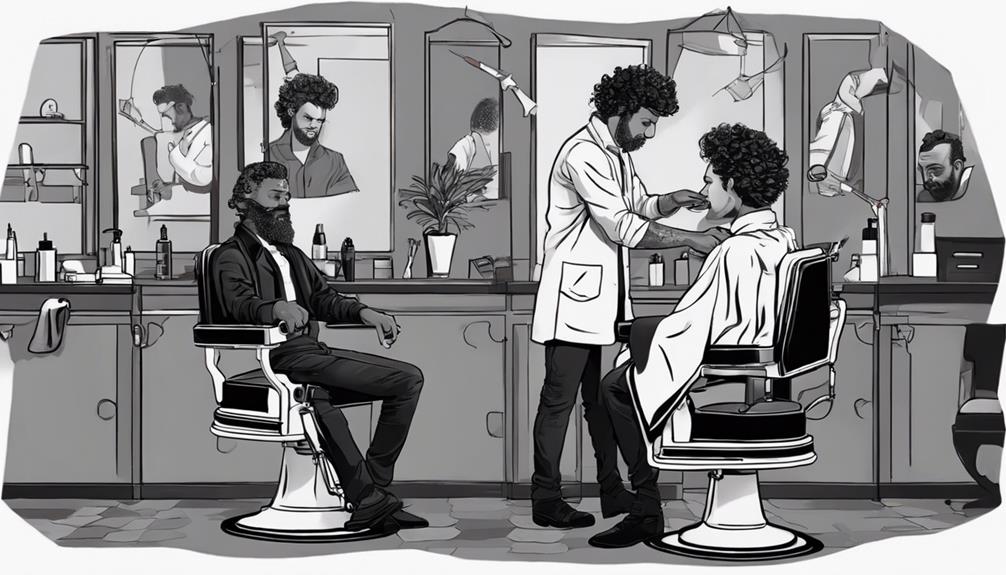
When styling curly hair, it's essential to choose the right products to enhance curls, reduce frizz, and maintain moisture levels. Additionally, taking precautions with heat styling tools can help preserve the health and integrity of the hair.
Establishing a solid maintenance routine that includes gentle detangling, proper drying techniques, and experimenting with different styling methods can keep curly hair looking its best.
Product Selection Tips
To enhance the moisture and definition of curly hair, selecting styling products with ingredients like shea butter or coconut oil is essential. When choosing products for curly hair, consider the following tips:
- Sulfate-Free Formulas: Opt for shampoos and conditioners that are sulfate-free to maintain the natural oils in your curly hair.
- Moisturizing Ingredients: Look for products containing shea butter or coconut oil to provide added moisture and enhance the definition of your curls.
- Alcohol-Free Options: Choose styling gels or mousses that are alcohol-free to prevent drying out your curly hair and to keep it looking healthy and vibrant.
Heat Styling Precautions
When preparing to style curly hair with heat tools, it's essential to prioritize the use of a heat protectant spray to shield the delicate strands from potential damage. Curly hair is more susceptible to heat damage, making this step vital.
Opt for lower heat settings on styling tools to prevent frizz and dryness in curly hair. Consider air drying or using a diffuser attachment on a hair dryer for heat-free styling options. Avoid over-styling with heat tools to maintain the natural bounce and texture of curly hair.
Additionally, incorporate deep conditioning treatments to keep curly hair healthy and hydrated, especially after heat styling. By following these precautions, you can ensure your curly hair remains vibrant and damage-free.
Maintenance Routines
Gently detangling curly hair with a wide-tooth comb or fingers helps prevent breakage and frizz, maintaining the natural beauty of your curls.
To keep your curls looking their best, consider the following maintenance routines:
- Apply a leave-in conditioner or curl cream to hydrate and define your curls, enhancing their natural shape and texture.
- Avoid brushing your curly hair when dry to prevent disrupting the curl pattern and causing frizz.
- Use a diffuser attachment on a hair dryer to dry your curly hair without creating frizz, maintaining those bouncy curls.
Post-Cut Care and Maintenance
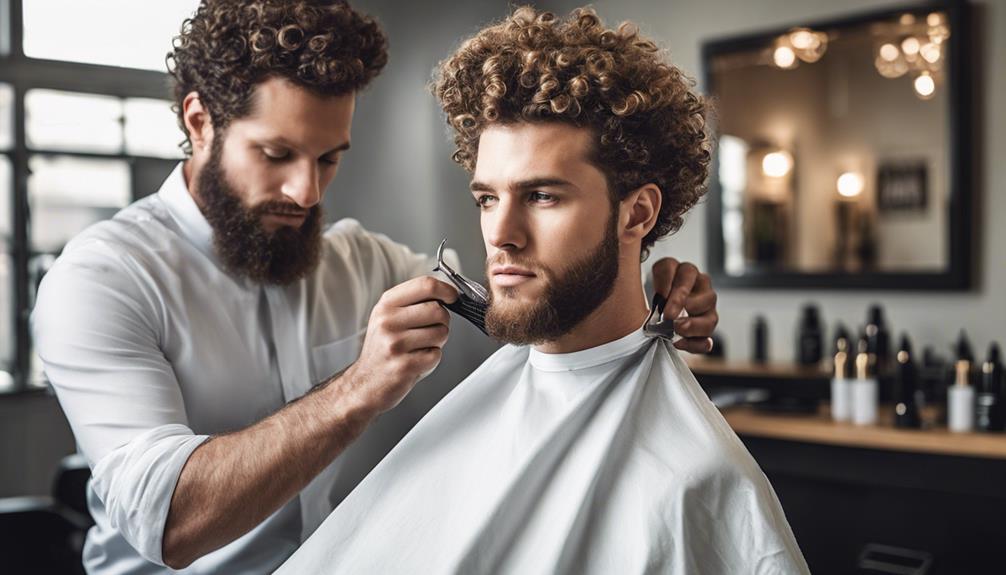
Using a sulfate-free shampoo and conditioner is crucial for maintaining the health and integrity of curly hair after a cut. To keep your curls looking their best post-cut, consider incorporating the following care and maintenance routine:
| Step | Description | Benefits |
|---|---|---|
| Apply Leave-In Conditioner/Styling Cream | Enhances natural texture and definition of curls. | Adds moisture and reduces frizz. |
| Gently Dry with Microfiber Towel | Minimizes frizz and prevents damage compared to regular towels. | Preserves curl shape and bounce. |
| Deep Conditioning Treatment | Hydrates and nourishes curly hair, keeping it healthy and vibrant. | Restores moisture and enhances elasticity. |
| Avoid Heat Styling Tools | Opt for air-drying or diffusing to maintain the shape and bounce of the haircut. | Prevents heat damage and frizz. |
| Regular Trims | Schedule trims every 6-8 weeks to maintain the shape and health of your curly hair, preventing split ends and breakage. | Ensures the haircut stays fresh and promotes hair growth. |
Seeking Professional Advice
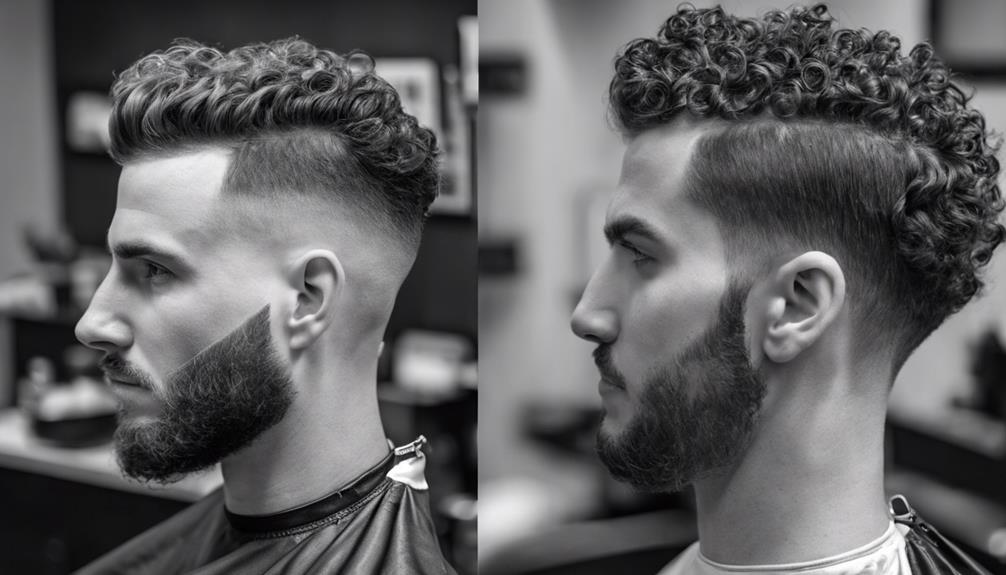
When contemplating a new haircut, seeking professional advice is essential for achieving the best results. Hairdressers can provide expert consultation tips tailored to your specific curly hair needs.
Industry insights exchange between you and a professional can lead to a haircut that enhances your natural curls.
Expert Consultation Tips
Seeking professional advice from experienced hairdressers is essential for determining the best haircut techniques tailored to your curly hair type and style preferences. Here are some expert consultation tips to contemplate:
- Personalized Recommendations: Hair professionals can provide customized guidance based on your unique hair type and preferred style, ensuring the haircut suits you perfectly.
- Effective Maintenance Routines: Expert consultation helps in establishing proper care routines specific to your curly hair needs, ensuring long-term health and manageability.
- Product and Tool Suggestions: Professional hairstylists can recommend suitable products and tools to manage and style your curly hair effectively, enhancing its natural texture and appearance.
Industry Insights Exchange
To gain valuable insights into cutting men's curly hair like a pro, tapping into industry experts for advice is a wise move. Professionals offer guidance on cutting techniques, tools for precision, and post-cut hair maintenance. Here's how industry insights exchange can elevate your haircutting skills:
| Benefits of Industry Insights Exchange | How It Helps |
|---|---|
| Access to cutting-edge techniques | Stay ahead in the industry |
| Insider tips on curly haircare | Guarantee hair health post-cut |
| Avoid common cutting mistakes | Achieve desired styles easily |
Frequently Asked Questions
How Do Professionals Cut Curly Hair?
Professionals cut curly hair by utilizing techniques such as 'slithering' or 'slide cutting' to enhance texture and remove bulk while maintaining length. Layering is essential to prevent the triangle shape and encourage movement and volume in curly hair.
Understanding the hair's elasticity and shrinkage aids in creating a customized haircut that complements its natural texture. Additionally, cutting curly hair when dry allows for accurate visualization of the curl pattern for precise cutting.
How Do I Make My Curly Hair Look Professional Men?
When aiming to make our curly hair look professional, we focus on enhancing our natural texture and achieving a polished finish. By following a meticulous grooming routine and using quality products, we elevate our curls to a sophisticated level.
Embracing our unique waves like a sculptor shaping clay, we trim, style, and maintain our locks with precision. Consistency and attention to detail are key in achieving a professional look that showcases our curly hair's true potential.
Should You Cut Men's Curly Hair Wet or Dry?
We believe cutting men's curly hair when wet is crucial for precision and control. Wet hair allows for better visualization of the natural curl pattern, leading to a more precise and even haircut. Dry cutting may cause shrinkage, resulting in a shorter length than desired.
Professionals often recommend wet cutting for ideal results with curly hair. So, yes, we suggest cutting men's curly hair when wet to achieve a professional look.
What Is the Best Haircut for Curly Hair for Male?
The best haircut for curly hair on men is often a layered cut to manage volume and texture. A tapered cut can also provide a clean, polished look. Avoid blunt cuts as they can create a triangular shape and excessive volume.
Consulting with a professional hairstylist experienced with curly hair can help find the right haircut for your hair type and face shape. Consider styling techniques like diffusing or using curl-enhancing products to enhance natural texture.
>Can the Techniques for Cutting Men’s Curly Hair be Applied to Black Boys’ Hair Cut Styles?
When it comes to black boys hair cut styles, the same techniques for cutting men’s curly hair can be applied. However, it’s important to consider the specific texture and thickness of black boys’ hair. Using the right tools and products tailored to their hair type can ensure a great looking cut.
Conclusion
To wrap up, cutting men's curly hair can be a challenge, but with the right techniques and tools, anyone can achieve professional results.
Did you know that curly hair grows at a rate of about 1/2 inch per month?
By following these 10 steps, you can confidently cut curly hair like a pro and help your clients achieve the look they desire.
Don't be afraid to experiment and embrace the natural texture of curly hair for a unique and stylish finish.
